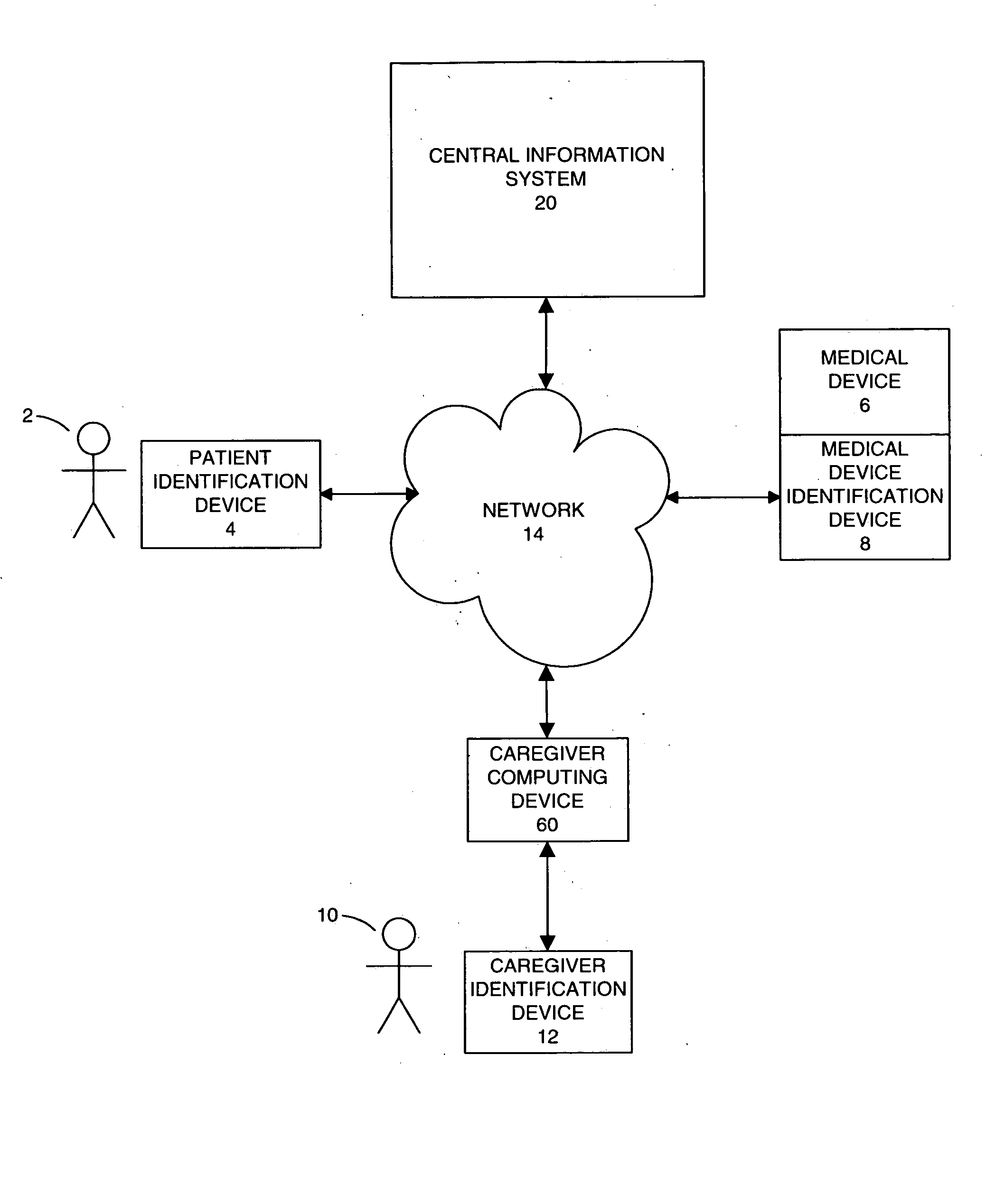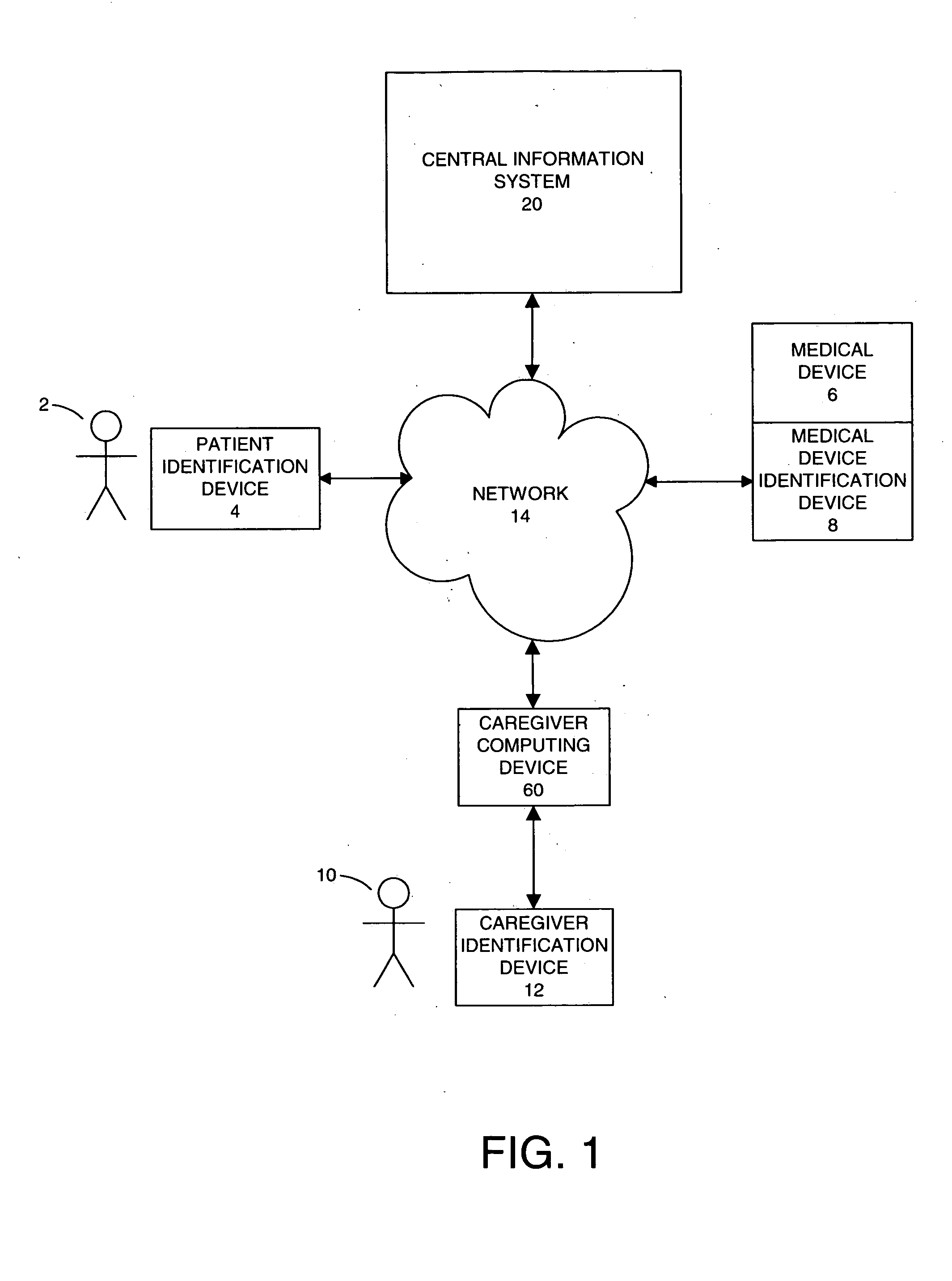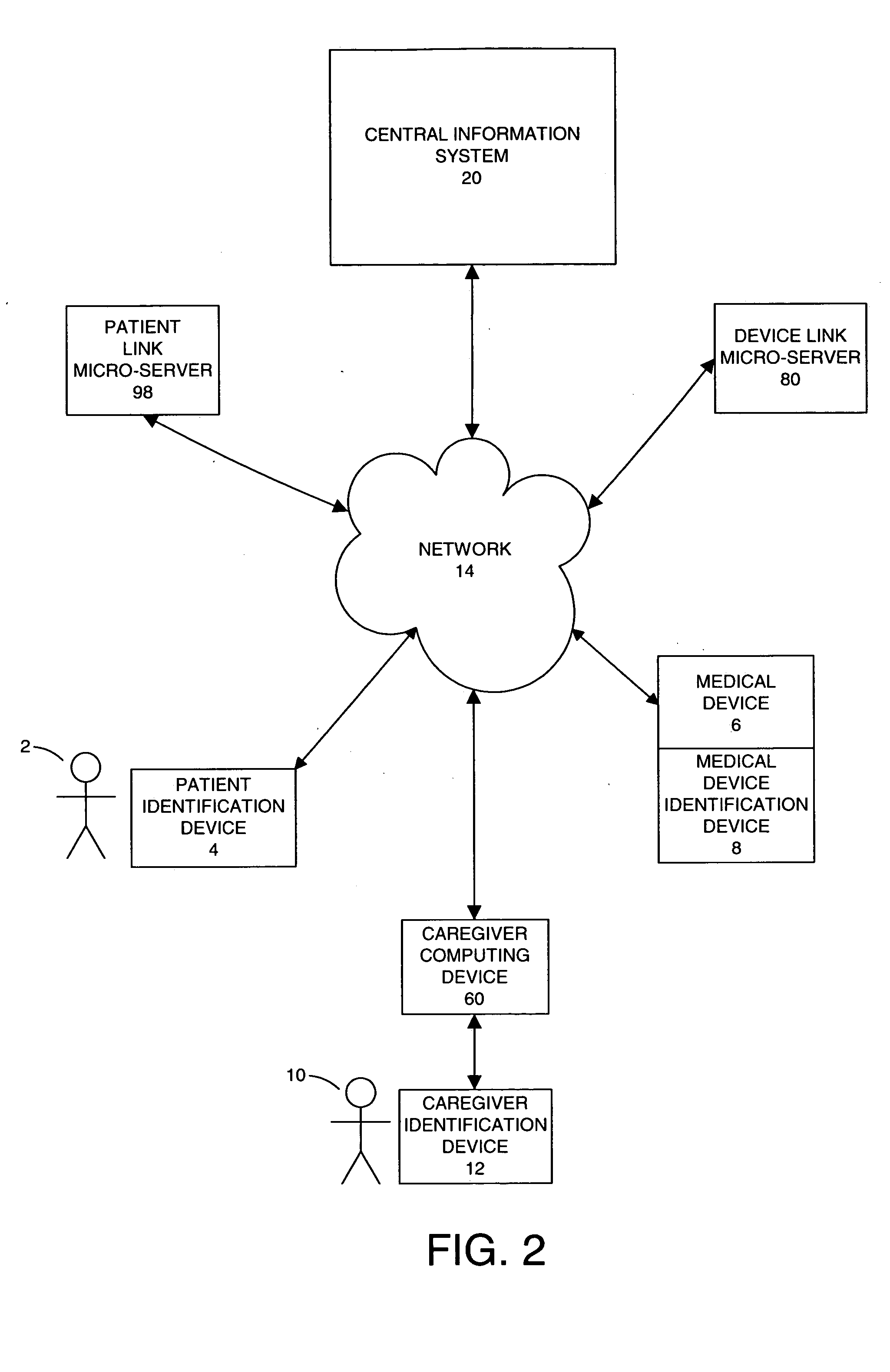Task-based system and method for managing patient care through automated recognition
a task-based system and task-based recognition technology, applied in the field of patient care management, can solve the problems of increasing the potential for devastating healthcare errors, the most dangerous segment of a patient's hospital stay, and the dispensing of medications in an institutional environment. achieve the effect of facilitating task performan
- Summary
- Abstract
- Description
- Claims
- Application Information
AI Technical Summary
Benefits of technology
Problems solved by technology
Method used
Image
Examples
Embodiment Construction
[0026] Embodiments of the present invention are directed to a system and method for managing patient care in a safe manner so as to minimize caregiver error and maximize efficiency. Having briefly provided an overview of the present invention, embodiments of the invention will be discussed with reference to FIGS. 1-19.
[0027] Specifically, with initial reference to FIG. 1, a patient identification device 4 may identify a patient 2 and a medical device or medication device identification device 6 may identify a medical device or medication 8. A caregiver identification device 12 may identify a caregiver 10. A central information system 20 and a caregiver portable computing device 60 are capable of communicating over a network 14. The caregiver portable computing device 60 is also capable of processing information from the patient identification device 4, the medical device identification device 8, and the caregiver identification device 12. The caregiver portable computing device 60 ...
PUM
 Login to View More
Login to View More Abstract
Description
Claims
Application Information
 Login to View More
Login to View More - R&D
- Intellectual Property
- Life Sciences
- Materials
- Tech Scout
- Unparalleled Data Quality
- Higher Quality Content
- 60% Fewer Hallucinations
Browse by: Latest US Patents, China's latest patents, Technical Efficacy Thesaurus, Application Domain, Technology Topic, Popular Technical Reports.
© 2025 PatSnap. All rights reserved.Legal|Privacy policy|Modern Slavery Act Transparency Statement|Sitemap|About US| Contact US: help@patsnap.com



